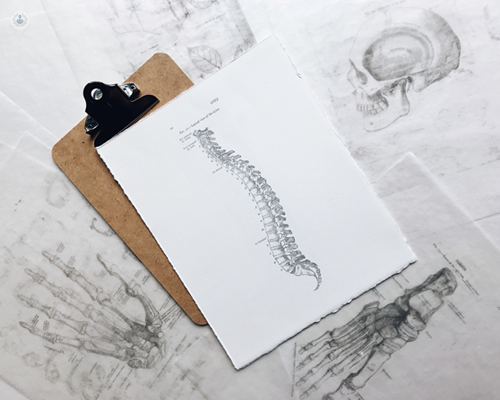What happens when you get an epidural steroid injection?
Written in association with:If you experience severe back pain, one of the treatment solutions is an epidural steroid injection.
Here to explain what’s involved in this procedure is leading sports medicine specialist Dr Ralph Rogers.

What is an epidural steroid injection?
An epidural injection is when steroid is injected into the epidural space. This is a space located between the vertebrae and the dural sac of the spine, and it’s surrounding the spinal cord.
The steroid, in theory, reduces the inflammation of the nerve roots as they leave the spine, which can help alleviate back pain.
How is the injection performed?
The patient lies on their stomach, and the neck or back skin is cleansed with an antiseptic solution. The skin and deeper tissues are then made numb with an anaesthetic using a small needle. Once the anaesthetic takes effect, an X-ray machine guides the needle into the epidural space.
X-ray contract is injected once the epidural space is entered, which ensures correct positioning of the needle. Then, medication that consists of a numbing medicine and steroid called dexamethasone will be injected. The procedure takes approximately 15 minutes.
Will the injection hurt?
There is some discomfort with needle insertion. However, this is minimised by numbing the skin that is over the joint with a local anaesthetic.
How long do results last?
They might last a few months or much longer. The most important is pain relief in the first couple of hours after the injection. This is because it tells us our diagnosis is likely correct. If the symptoms do return, we’ll discuss options available for continued pain relief, which may include repeating the injection for additional benefit.
What happens after the injection?
You will go to a follow-up appointment in order to discuss how effective the epidural steroid injection was. If it wasn’t successful, other treatment options will be discussed.
What are the risks and side effects?
Serious side effects and complications are rare. The most common issue is having pain in the area of the injection for a few days. Other complications are:
- infection;
- bleeding, and;
- nerve injury.
These complications are minimised by using a sterile technique and fluoroscopy for X-ray needle guidance.
If you’re in London and would like to see if epidural steroid injections are the right treatment option for your back pain concerns, arrange an appointment with Dr Rogers via his Top Doctors profile.


